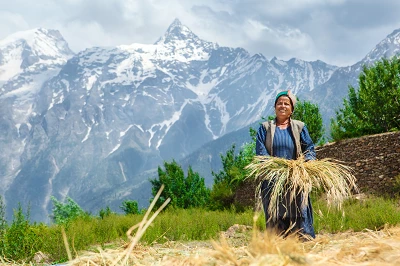Delivering food and nutrition security in the face of climate change is one of the biggest challenges of our generation. So it’s encouraging to see influential stakeholders around the world taking action today at the Climate Summit. From the private sector’s efforts to put a price on carbon, to the energy sector’s focus on lowering emissions, key stakeholders are realizing that inaction is not an option.
But one sector has yet to get its act together. Climate action may be gaining momentum, but the agriculture sector is largely stuck in ‘business as usual’ mode. Unlike other areas of the economy, it hasn’t made any big, transformational moves towards climate resilience or reducing emissions. We are missing our “electric car”.
Agriculture is being left behind at a time when it should be leading on climate action. Few other sectors are as vulnerable to climate change, or as primed to contribute to delivering solutions for the billions affected. We need to grow at least 50% more food to feed a projected 9 billion people by 2050. This won’t be easy--a warming climate threatens to cut crop yields by more than 25% and endanger the lives and livelihoods of more than 75% of the world’s poor, who are farmers. However, let’s be clear, agriculture is also a major part of the climate problem. It generates around a quarter of total greenhouse gas emissions. Without action, that number could rise to almost three quarters of the total permissible emissions to stay within a two degrees world.
We need to grow enough food to feed the world, and that needs to happen in a way that delivers solutions without increasing problems. To achieve food and nutrition security we need to change how we think. We need to figure out how we increase productivity, while building resilience for farmers and supply chains and simultaneously reducing the emissions it takes to achieve those goals. We need action at scale, driven by dynamic, transformative partnerships on the ground. Very simply, we need climate-smart agriculture and we need it now.
Today’s launch of the Global Alliance on Climate Smart Agriculture is a step in the right direction. The alliance represents a diverse group of stakeholders that has come together to catalyze collective action around climate-smart agriculture. I’m optimistic about what this symbolizes, and what it could achieve moving forward, as long as we keep our focus on results and monitoring real impact.
I’m also determined to deliver on the commitment we’ve made to scale up climate-smart agriculture for impact at the World Bank. We’ve already begun appraising our projects through a climate-smart lens, and ensuring that we deliver higher productivity, climate resilience and lower emissions. This has resulted in a number of catalytic projects. By 2018, we are aiming for 100% of our agriculture projects to be climate-smart.
Momentum is building around climate-smart agriculture. But to feed the world and help put farmers on the path to prosperity and higher incomes, we need more collective action at scale. We need to transform the way we do agriculture. Today is a good day to get started.



Join the Conversation